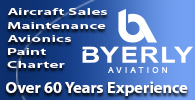We’ve all been there. Rotate, positive rate gear up, autopilot on, and…confusion.
Autopilots are a layer of automation that are supposed to make life easier and flying safer by taking away the need to be hands-on, which frees up our brain to do more higher-order strategic thinking. At least, that’s how it’s supposed to work. Too often what really happens is that we turn it on and immediately ask, “What’s it doing now?”
Twin Commander instructor Barry Lane sees this all the time, and he chalks it up to the law of primacy, which says what we learn first is most intense and tends to therefore have the greatest sticking power. Many pilots come from airplanes that have autopilots like the AP106, and they tend to fly their modern digital autopilots the same way. “Guys tend to figure out what they want the autopilot to do after they’ve already turned it on,” he said.
The key to breaking the habit is thinking of the autopilot the way the designers intended it to be used, which was in two layers. The first layer is the flight director and the second is the actual hands-off autopilot.
“In Commanders I preach first to program the first level of automation, which is heading, nav, altitude, or whatever condition you want,” Lane said. “Then activate the second level by tapping it on the shoulder and letting it fly the flight director.” In practice, the process is slightly more complicated, in part because the pilot must check and verify that what he or she is expecting to happen actually happens. Whether the box is mounted remotely by the hip with a scoreboard, or you’re pressing and verifying on the same display, Lane said it’s critical to select the mode, verify the annunciator, check the flight director, and only then turn on the autopilot.
Ensuring the automation is properly activated is only one part of good resource management. Lane also stresses the need to avoid abusing the automation. Activating it below the floor of 1,000 feet is a common improper practice, he said.
Then there’s the issue of turning off the box. “How we de-automate is just as important as how we automate,” he said. Although there are many ways to turn off the automation, it’s important to know that they’re not all equal. The red toggle switch on the yoke is a common way to disconnect the autopilot, but the problem is that according to Lane that’s not actually what you’re doing.
Turning off the yoke toggle switch turns off the electric pitch trim. That may be fine temporarily, but it’s safe to say you’re going to want it back on the approach and landing. He said the proper way to turn off the AP106 autopilot is the silver toggle switch on the unit, which keeps the electric pitch trim operational.
He also cautions against keeping the flight director active when it’s no longer desired. Stepping down a layer of automation to turn off the autopilot while keeping on the flight director is fine when that’s the desired action. But Lane said all too often pilots want to also wipe away the flight director but fail to do so. The result is a wonky indication from the flight director that must be ignored. That’s poor training for the brain, and an unnecessary mental step that must happen at a critical time in the flight. “Don’t train your brain that it’s optional data,” he said. “It’s an extra burden anytime you look at the instrument.”
While much of the recent discussions in aviation centered on automation, focus on its overuse; its misuse is often overlooked and ignored by pilots. The box is only as good as the programmer.




